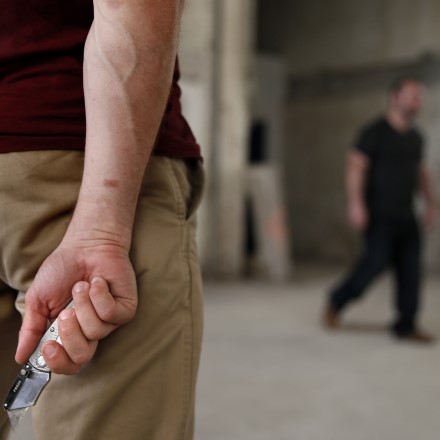Situational Awareness & Personal Safety

Articles On Situational Awareness
- Scanning - Control Of The Environment
- Interpreting Body Language
- Mobile Phones & Personal Safety
- Situational Awareness
- Denial - Recognizing The Signs
- Warning Signs
- Intent
- Cell Phones
- Falling for Predator's "Traps"
- Interpreting Body Language (Revisited)
- Natural Surveillance & Bystanders
- Situational Awareness - The Environmental Aspect
- Scanning
- Baselines
- The Pertinent Negative
- Situational Awareness, Mindfulness & Curiosity
- Intent (Revisited)
- Different Situations Different Solutions
- Labeling And Situational Awareness
- Situational Training & The Unconscious Mind
- Cues And Tells
- Responding to Surveillance
All Personal Safety Articles
Situational Awareness & Security
Situational Awareness (SA) is about having the knowledge, understanding and skills to identify those things, be they people, objects, actions and/or behaviors in an environment that could contain, or allow for harmful intent to occur against the person, or other assets that may be accessed and targeted. This can also include the absence of things – or people – which would be expected to be present e.g., if a heating engineer turns up at your house unannounced saying that they need access to your boiler/heating system because the gas company believe there is a leak etc. but there is no van present (as would be expected), then there may be something that is out of place; the absence of such things is often referred to as a “pertinent negative”. Such things are often forgotten in situational awareness training, as there is usually an emphasis for searching and identifying the environment for things that are present but shouldn’t be e.g., for people who are moving in the opposite direction to everybody else, or looking at something that the rest of the crowd aren’t – this was one of the things that made the Boston Marathon Bombers conspicuous; CCTV showed two individuals looking away from the finish line, whereas everybody else was watching the runners cross the line etc.
Situational Awareness works on two levels: the subconscious and the conscious. However, many people only train it at the conscious level i.e., they actively engage in searching the environment for things that are out of place, putting themselves in a heightened state of awareness. Unfortunately, unless engaged in a security detail, for most people this is both exhausting and unsustainable, and prevents their mind from engaging in other thought processes. In many ways are situational awareness should be developed as a skill like driving, which we largely perform as a subconscious process; if you’ve ever turned up at a destination without remembering large parts of the journey, that is because you performed the driving tasks subconsciously whilst you were consciously thinking about other things etc. This is ideally how we want our situational awareness to work i.e., it runs in the background, whilst we go about are day-to-day business, and only alerts us when something out of the ordinary happens etc. We can liken this to the way a gazelle can graze close to a sleeping lion without worry, as it knows a sleeping lion isn’t looking to hunt but will bolt as soon as it sees it start to wake up and move. The gazelle knows when the lion is motivated to hunt, and when it’s not engaging in such an activity the gazelle knows it is safe. By understanding and educating ourselves as to what danger looks like, rather than by profiling what offenders look like, we can have our subconscious perform most of our situational awareness tasks.
Rather than looking for people in winter coats on a hot summer’s day (a regularly used example of what situational awareness is), we should develop an inquisitive mind that our subconscious is happy to feed, when out of place events occur, and when they do we should reinforce our awareness by actively investigating those things it informs us about.